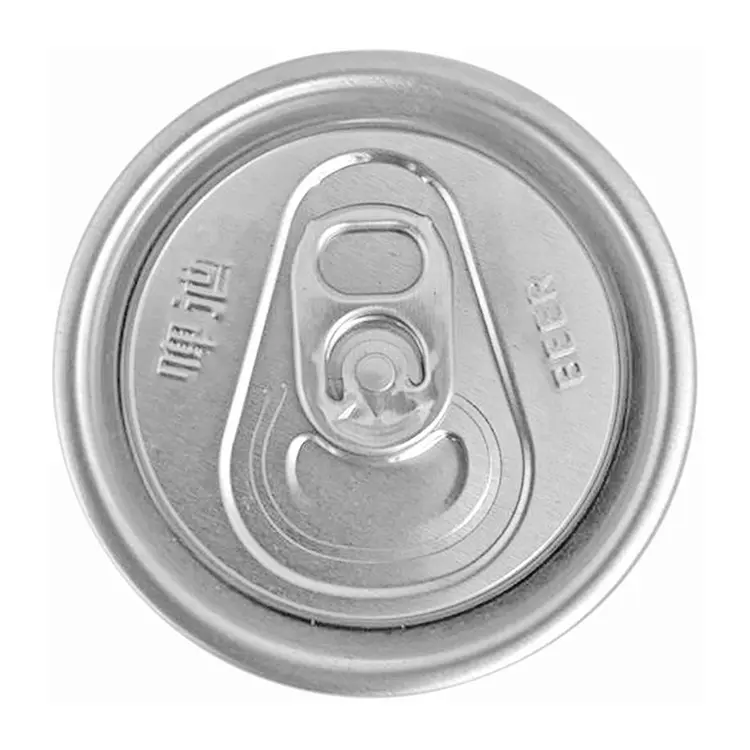In the fast-paced world of beverage and food production, every component, no matter how small, plays a critical role in brand reputation and product integrity. CDL can ends, also known as conventional double-lined easy-open ends, are the unsung heroes of packaging. They are the essential final seal that protects your product’s quality, extends its shelf life, and ensures a seamless experience for the end consumer. For businesses, choosing the right can end isn’t just a matter of logistics; it’s a strategic decision that impacts production efficiency, brand perception, and ultimate market success.
What Are CDL Can Ends?
A CDL can end is a type of aluminum or tinplate lid designed for beverage and food cans. The “CDL” stands for Conventional Double-Lined, referring to the two layers of sealant or compound applied to the end’s inner rim. This innovative design ensures a hermetic, airtight seal when seamed onto the can body, protecting the contents from oxygen, light, and contaminants. The most recognizable feature of a CDL can end is the integrated easy-open tab, which provides a convenient, pull-and-tear mechanism for consumers.
The Business Advantages of CDL Can Ends
For beverage producers and canners, integrating high-quality CDL can ends into their supply chain offers significant benefits:
Superior Product Integrity: The double-lined sealant technology provides an exceptionally reliable seal, crucial for preserving the freshness, flavor, and carbonation of beverages. This reliability is vital for maintaining product quality from the factory to the consumer’s hand.
Operational Efficiency: CDL can ends are engineered for high-speed automated canning lines. Their uniform dimensions and robust design allow for smooth, continuous production without frequent interruptions, helping to maximize throughput and reduce operational costs.
Enhanced Consumer Convenience: The easy-open tab is a consumer-favorite feature, making the product simple and effortless to enjoy. This positive user experience can lead to greater brand loyalty and repeat purchases.
Versatile Compatibility: CDL can ends are available in a range of standard sizes (e.g., 200, 202, 206) and materials, making them compatible with various can body types and filling processes for beverages, juices, and even certain food products.
Sourcing the Right CDL Can Ends
Selecting the right supplier for your CDL can ends requires careful consideration of several key factors to ensure a seamless and high-quality production process.
Material and Coating: The base material (aluminum vs. tinplate) and the type of internal coating are critical for product compatibility. Ensure the can end’s lining is suitable for your specific beverage, whether it’s acidic, carbonated, or has a high sugar content, to prevent corrosion and off-flavors.
Quality Assurance: Partner with a supplier who adheres to strict quality control standards. Inconsistent can end dimensions or sealant application can lead to costly sealing failures and product recalls.
Customization and Branding: Many manufacturers offer custom printing on the can end. This is a valuable opportunity for branding, promotional messaging, or adding unique pull-tab colors that make your product stand out on the shelf.
Logistics and Reliability: Choose a supplier with a proven track record of reliable delivery and a robust supply chain. Timely, consistent shipments of high-quality can ends are essential for uninterrupted production.
Conclusion
While they may be out of sight once the can is sealed, CDL can ends are a powerful determinant of a product’s success. By providing a secure seal, enabling efficient production, and offering a convenient consumer experience, they are a fundamental component of modern packaging strategy. Investing in high-quality can ends from a reliable partner is a proactive step toward protecting your product, your brand, and your bottom line.
FAQ
What does “CDL” stand for in CDL can ends? ”CDL” stands for Conventional Double-Lined. This refers to the two layers of sealant or compound applied to the can end’s inner rim, which creates a hermetic seal when it’s seamed onto a can body.
Are CDL can ends recyclable? Yes, most CDL can ends are made from aluminum or tinplate, both of which are highly and infinitely recyclable. This makes them a sustainable choice for beverage and food packaging.
What is the difference between a CDL can end and a SOT can end? ”CDL” (Conventional Double-Lined) describes the sealant technology, while “SOT” stands for Stay-On-Tab. SOT refers to the pull-tab’s design, which stays attached to the lid after opening. Most modern CDL can ends feature a Stay-On-Tab design.
How do I choose the right size of CDL can end for my cans? You need to match the can end diameter to your can body. Common sizes are measured in inches and include 202, 206, and 200. Always confirm the exact size with your can body supplier to ensure a perfect fit and a secure seal.
Post time: Sep-05-2025








